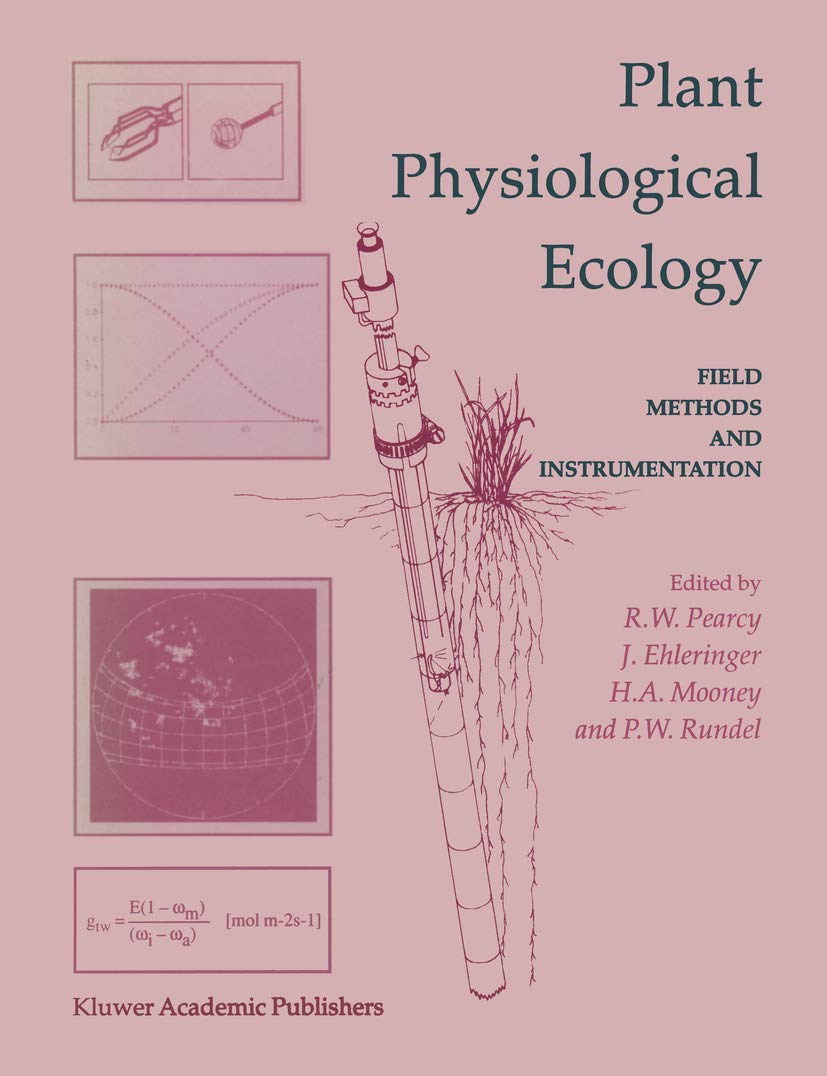
Title

Plant Physiological Ecology: Field Methods And Instrumentation
Delivery time: 8-12 business days (International)
capable of providing at least a relative measure of stomatal aperture were first used shortly thereafter (Darwin and Pertz, 1911). The Carnegie Institution of Washington's Desert Research Laboratory in Tucson from 1905 to 1927 was the first effort by plant physiologists and ecologists to conduct team research on the water relations of desert plants. Measurements by Stocker in the North African deserts and Indonesia (Stocker, 1928, 1935) and by Lundegardh (1922) in forest understories were pioneering attempts to understand the environmental controls on photosynthesis in the field. While these early physiological ecologists were keen observers and often posed hypotheses still relevant today they were strongly limited by the methods and technologies available to them. Their measurements provided only rough approximations of the actual plant responses. The available laboratory equip ment was either unsuited or much more difficult to operate under field than laboratory conditions. Laboratory physiologists distrusted the results and ecologists were largely not persuaded of its relevance. Consequently, it was not until the 1950s and 1960s that physiological ecology began its current resurgence. While the reasons for this are complicated, the development and application of more sophisticated instruments such as the infrared gas analyzer played a major role. In addition, the development of micrometeorology led to new methods of characterizing the plant environments.
By changing our most important processes and
products, we have already made a big leap forward. This ranges from the
increased use of more sustainable fibers to the use of more
environmentally friendly printing processes to the development of
efficient waste management in our value chain.
⚠️ WARNING (California Proposition 65):
This product may contain chemicals known to the State of California to cause cancer, birth defects, or other reproductive harm.
For more information, please visit www.P65Warnings.ca.gov.
Shipping & Returns
Shipping
We ship your order within 2–3 business days for USA deliveries and 5–8 business days for international shipments. Once your package has been dispatched from our warehouse, you'll receive an email confirmation with a tracking number, allowing you to track the status of your delivery.
Returns
To facilitate a smooth return process, a Return Authorization (RA) Number is required for all returns. Returns without a valid RA number will be declined and may incur additional fees. You can request an RA number within 15 days of the original delivery date. For more details, please refer to our Return & Refund Policy page.
Shipping & Returns
Shipping
We ship your order within 2–3 business days for USA deliveries and 5–8 business days for international shipments. Once your package has been dispatched from our warehouse, you'll receive an email confirmation with a tracking number, allowing you to track the status of your delivery.
Returns
To facilitate a smooth return process, a Return Authorization (RA) Number is required for all returns. Returns without a valid RA number will be declined and may incur additional fees. You can request an RA number within 15 days of the original delivery date. For more details, please refer to our Return & Refund Policy page.
Warranty
We provide a 2-year limited warranty, from the date of purchase for all our products.
If you believe you have received a defective product, or are experiencing any problems with your product, please contact us.
This warranty strictly does not cover damages that arose from negligence, misuse, wear and tear, or not in accordance with product instructions (dropping the product, etc.).
Warranty
We provide a 2-year limited warranty, from the date of purchase for all our products.
If you believe you have received a defective product, or are experiencing any problems with your product, please contact us.
This warranty strictly does not cover damages that arose from negligence, misuse, wear and tear, or not in accordance with product instructions (dropping the product, etc.).
Secure Payment
Your payment information is processed securely. We do not store credit card details nor have access to your credit card information.
We accept payments with :
Visa, MasterCard, American Express, Paypal, Shopify Payments, Shop Pay and more.
Secure Payment
Your payment information is processed securely. We do not store credit card details nor have access to your credit card information.
We accept payments with :
Visa, MasterCard, American Express, Paypal, Shopify Payments, Shop Pay and more.
Related Products
You may also like
Frequently Asked Questions
- Q: What is the main focus of 'Plant Physiological Ecology'? A: 'Plant Physiological Ecology: Field methods and instrumentation' primarily focuses on the interactions between plants and their environments, specifically how environmental factors influence physiological processes in plants.
- Q: Who is the author of this book? A: The author of 'Plant Physiological Ecology' is Robert W. Pearcy.
- Q: What is the condition of the book? A: The book is listed as 'Used Book in Good Condition', indicating it may have some wear but is still functional.
- Q: When was 'Plant Physiological Ecology' published? A: 'Plant Physiological Ecology' was published on October 31, 1990.
- Q: How many pages does the book contain? A: The book contains 472 pages.
- Q: What type of binding does this book have? A: 'Plant Physiological Ecology' is available in paperback binding.
- Q: What topics are covered in this book? A: The book covers topics related to plant physiology, ecology, environmental controls on photosynthesis, and the development of field methods for measuring plant responses.
- Q: Is this book suitable for beginners in plant physiology? A: While the book is comprehensive, it may be more suitable for readers with some prior knowledge in plant physiology or ecology due to its detailed methodologies and historical context.
- Q: What edition is this book? A: 'Plant Physiological Ecology' is a 2000 edition.
- Q: Can this book help with understanding water relations in desert plants? A: Yes, the book discusses early research on water relations in desert plants and the methodologies used to study these interactions.
